How to Draw False Ceiling Plan in Autocad
Part One. AutoCAD
Chapter 5. Draw ceiling plans
Upon completing this session, students volition exist able to:
- (CO 1) Draw RCPs from Floor plans
- (CO 2) Add together/Edit Hatch
- (CO 3) Create a fable for the RCPs
 Session Highlights
Session Highlights
At the cease of the session, students tin create the graphics below.
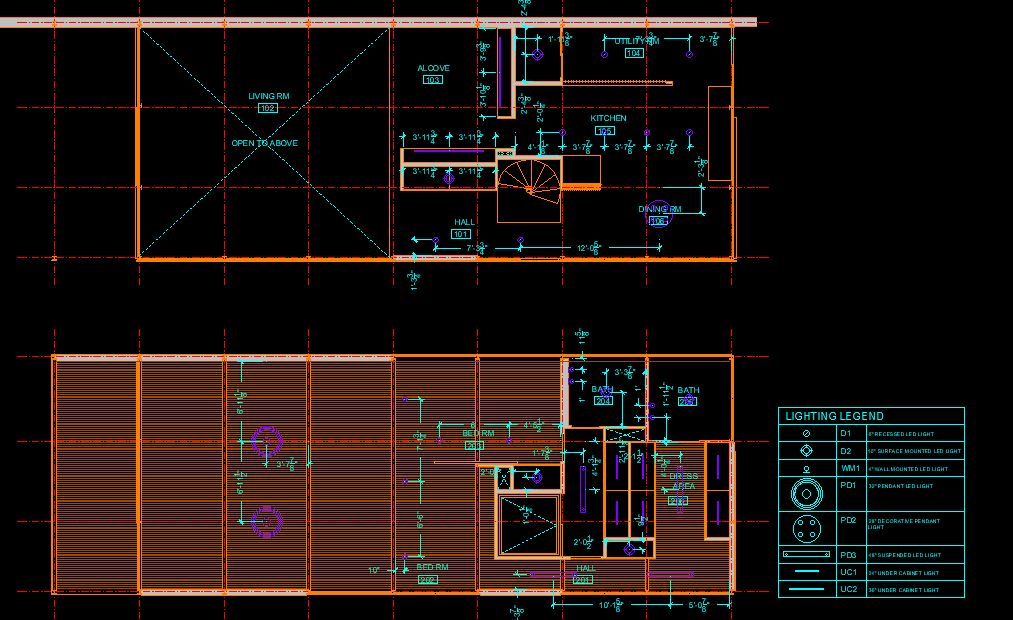
 Lecture Contents
Lecture Contents
(CO one) Describe Reflected ceiling plans (RCPs) from floor plans
In this tutorial, you will learn how to draw an RCP in AutoCAD.
Open your AutoCAD file
Copy elements from the floor programme
- [Step 01] Plow layers off that are not needed to copy for the RCPs.
Turn off the post-obit layers: A-ANNO, A-ANNO-DIMS, A-ANNO-TEXT, ANNO-TTLB, A-CLNG, A-CLNG-PATT, A-DETL, A-FLOR, A-FLOR-FNSH, A-FLOR-HRAL, A-LWT-OBJECT, A-LWT-Department, A-LWT-SURFACE, Defpoints, I-FURN, P-Fix, S-LEVEL
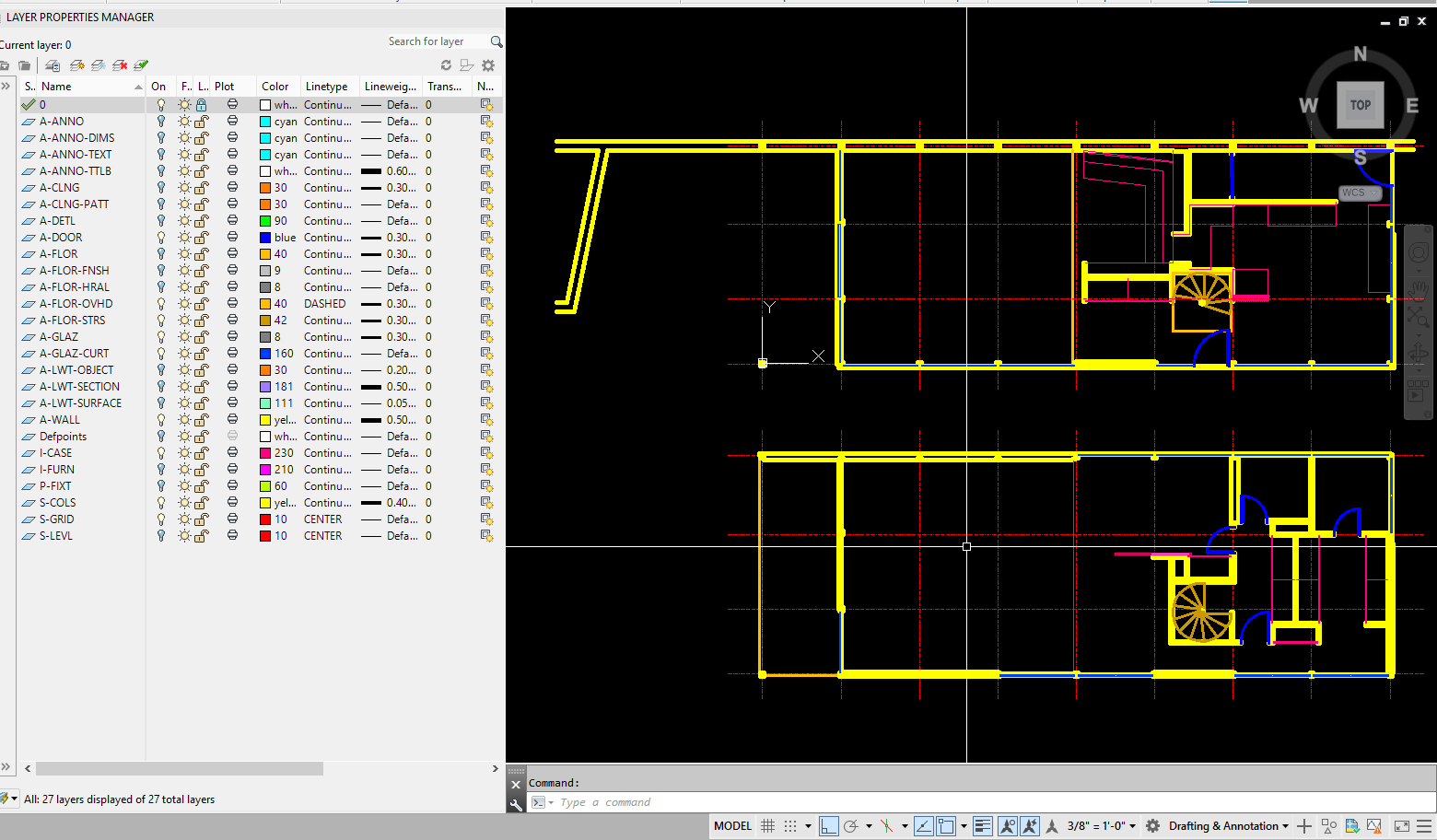
- [STEP 02] Re-create the remaining elements to 100' plan south direction
- [Stride 03] Turn on all layers
- [STEP 04] Clean up the programme
- In the space, we want to evidence all door openings, only not the doors themselves. To remove the door swing, you must Explode the door blocks and remove the doors themselves and swings
- For the casework, remove the casework that is not beneath 5 ft.
- Extend lines as needed to make clean up the programme
- [Footstep 05] Lock [Due south-GRID] layer > Select all walls and elements for the RCPs > Switch to the [A-CLNG] layer.
- [STEP 06] Make the [A-CLNG] layer to the Electric current Layer
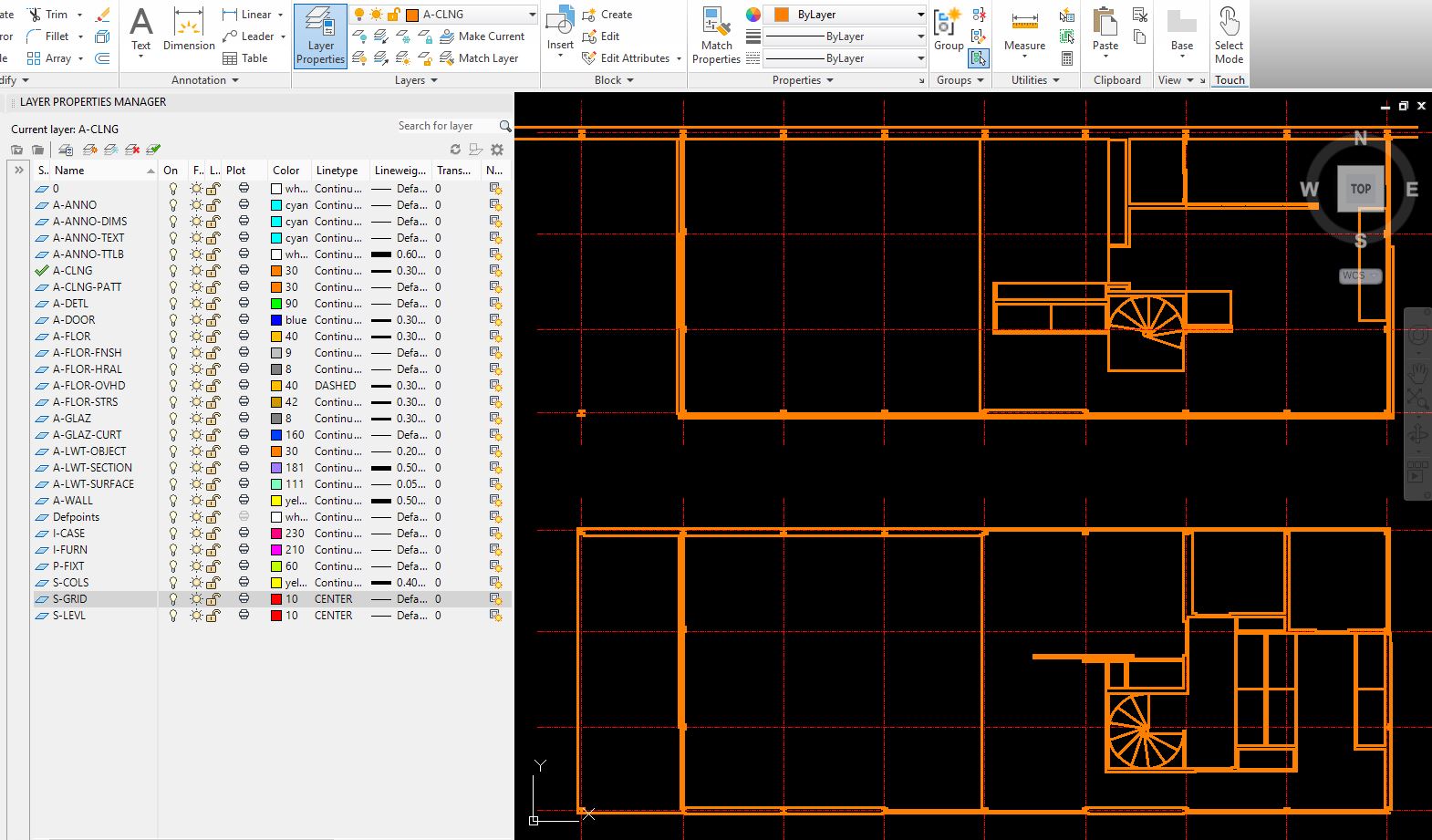
- [STEP 07] Add ceiling elements (height changes and ceiling structure if information technology is the open ceiling)

- [STEP 08] Make the [A-CLNG-PATT] layer to the Current Layer > Confirm the layer colour to 34 > Add ceiling pattern
- [STEP 09] Brand the [A-CLNG-PATT] layer to the Electric current Layer > Add ceiling notation
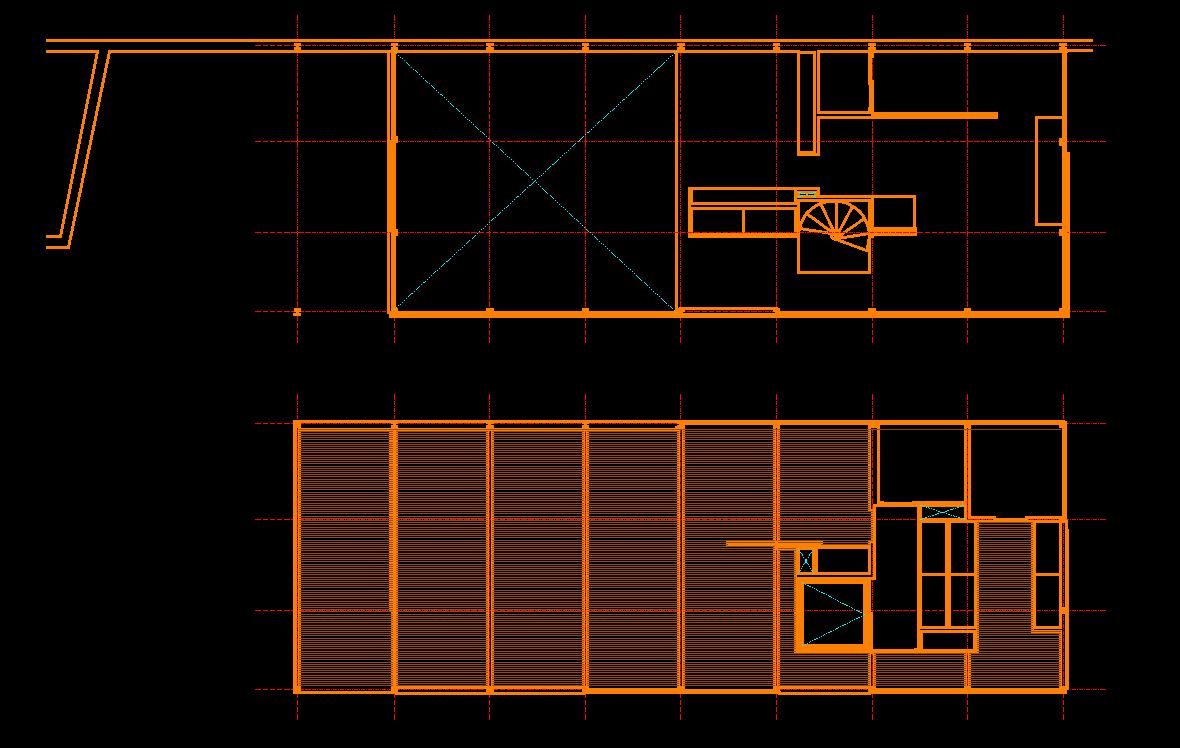
- [STEP 10] Copy the room proper name and number block from flooring programme
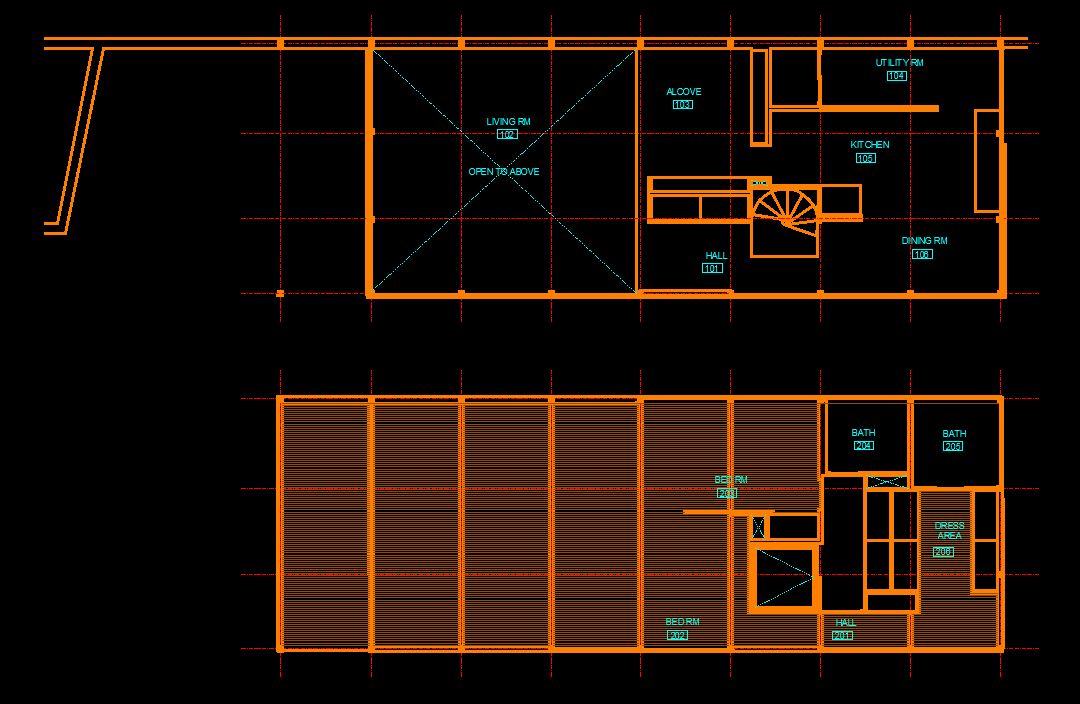
- [STEP eleven] Create Lighting symbols
- You tin can bring lighting symbols (blocks) from other websites or the samples from Electrical-lighting folders using [Design CENTER]
- And you also tin can make your own symbols for your project. I created eight types of lighting fixtures
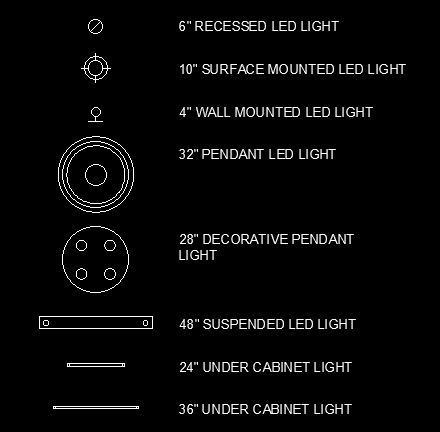
- [STEP 12] Add [A-CLNG-FIXT], color – 190, lineweight – 0.25mm > Place lighting symbols (blocks) in the floor plans > Switch the lite symbols to [A-CLNG-FIXT]
- [Stride 13] Select all lighting symbols from the floor plans > Create a block [000-lighting fixtures] > Move the cake to the RCPs
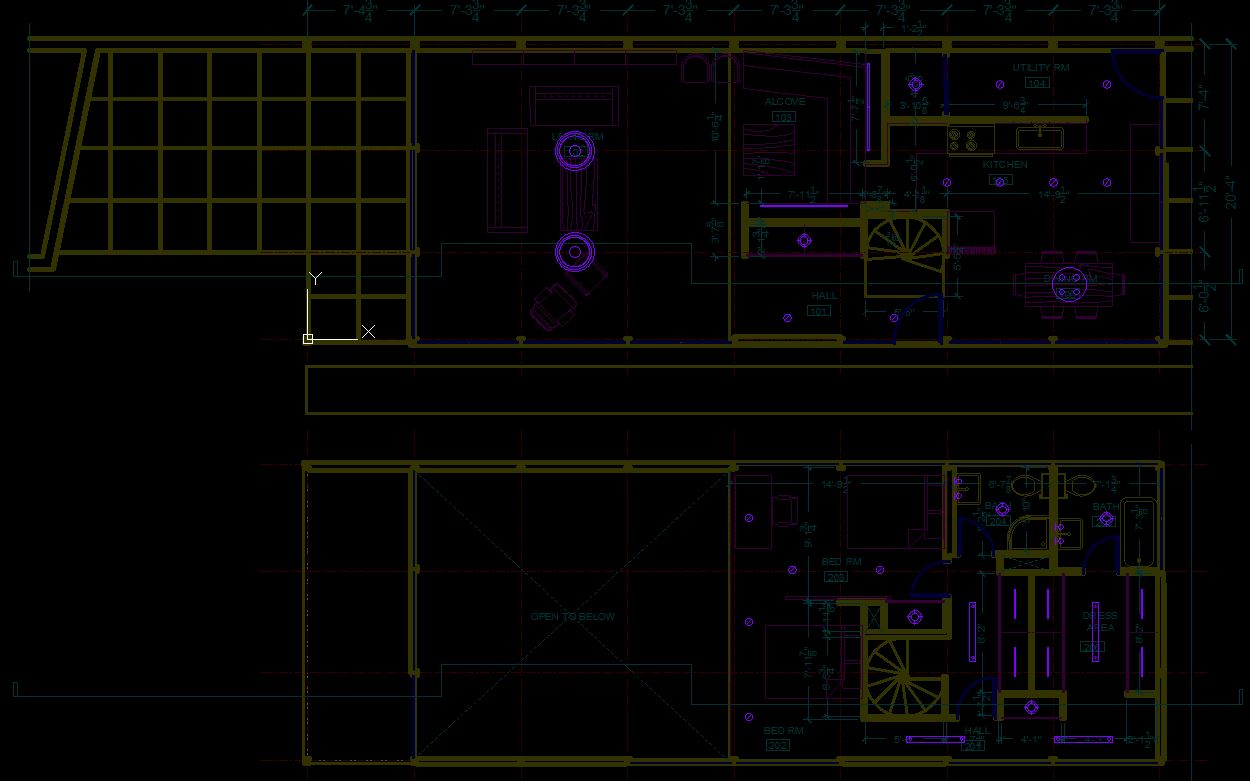
- [STEP 14] Select the block on the RCPs> Mouse right-click > Select [Edit Block in-identify] > Adjust and marshal the lighting fixture with add dimensions > Click [Salve changes]
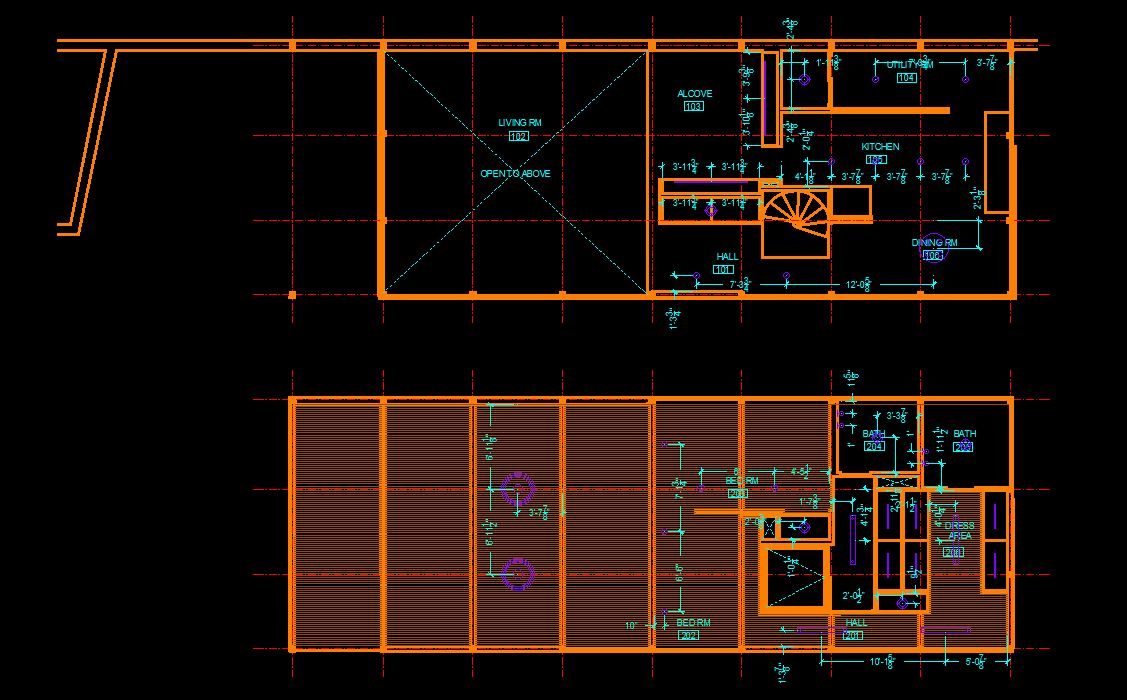
(CO 2) Add /Edit Hatch
- [Pace 1] Hide unnecessary layers for ameliorate hatch results
- Confirm the current layer is [0] layer
- Turn off all layers except [0], [A-WALL], [A-LWT-SECTION], and [A-CLNG] layers
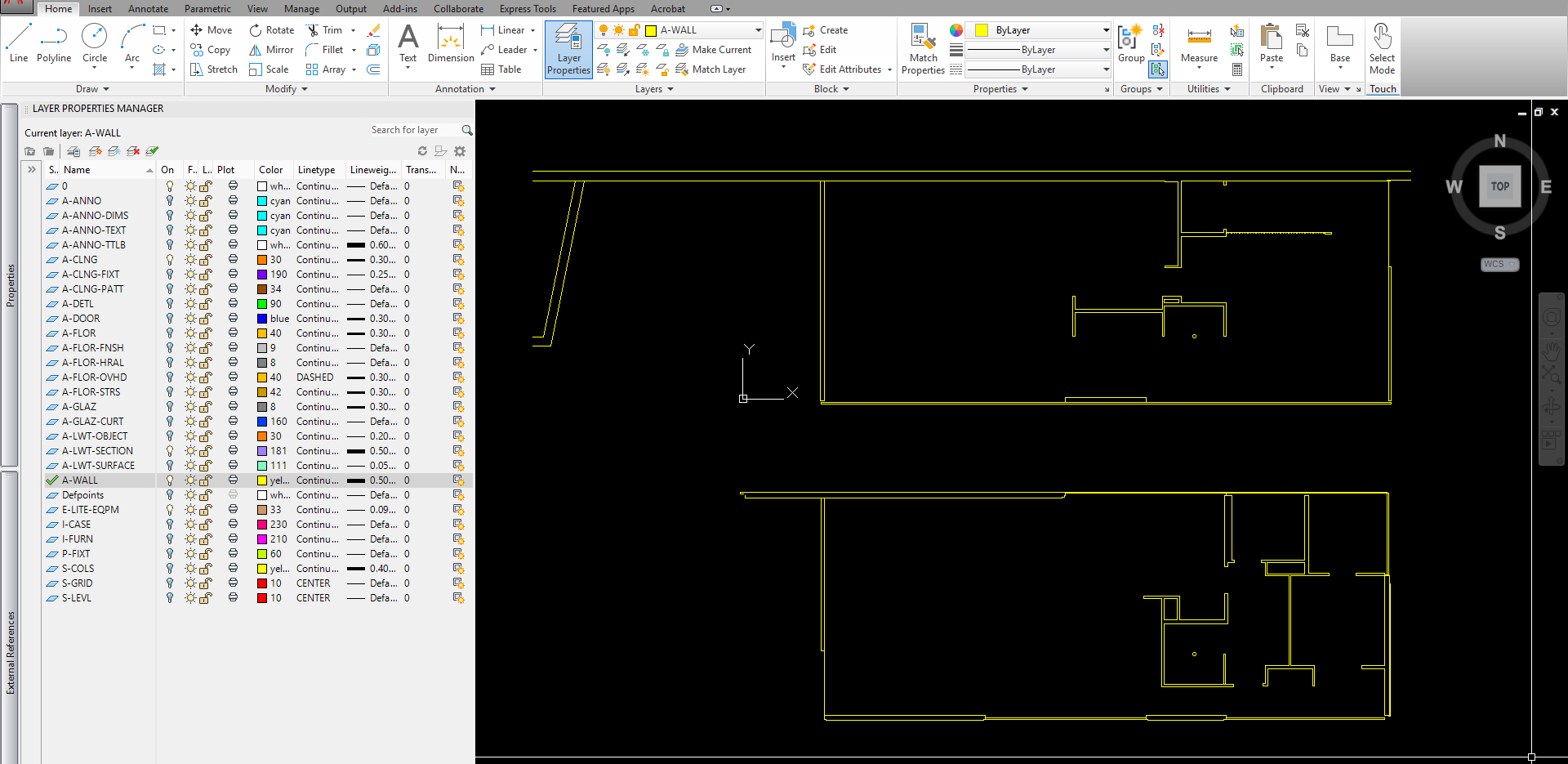
- [Footstep 2] Describe lines or pline to create a airtight object
- Hatch simply recognizes a closed object. Thus you must make a closed pline or lines that are completely closed. If you are unsure the object is closed or non, yous accept to try the Hatch command outset. If the hatch control doesn't work, yous have to redraw using [PLINE] or apply [PEDIT] to convert from lines to [pline].
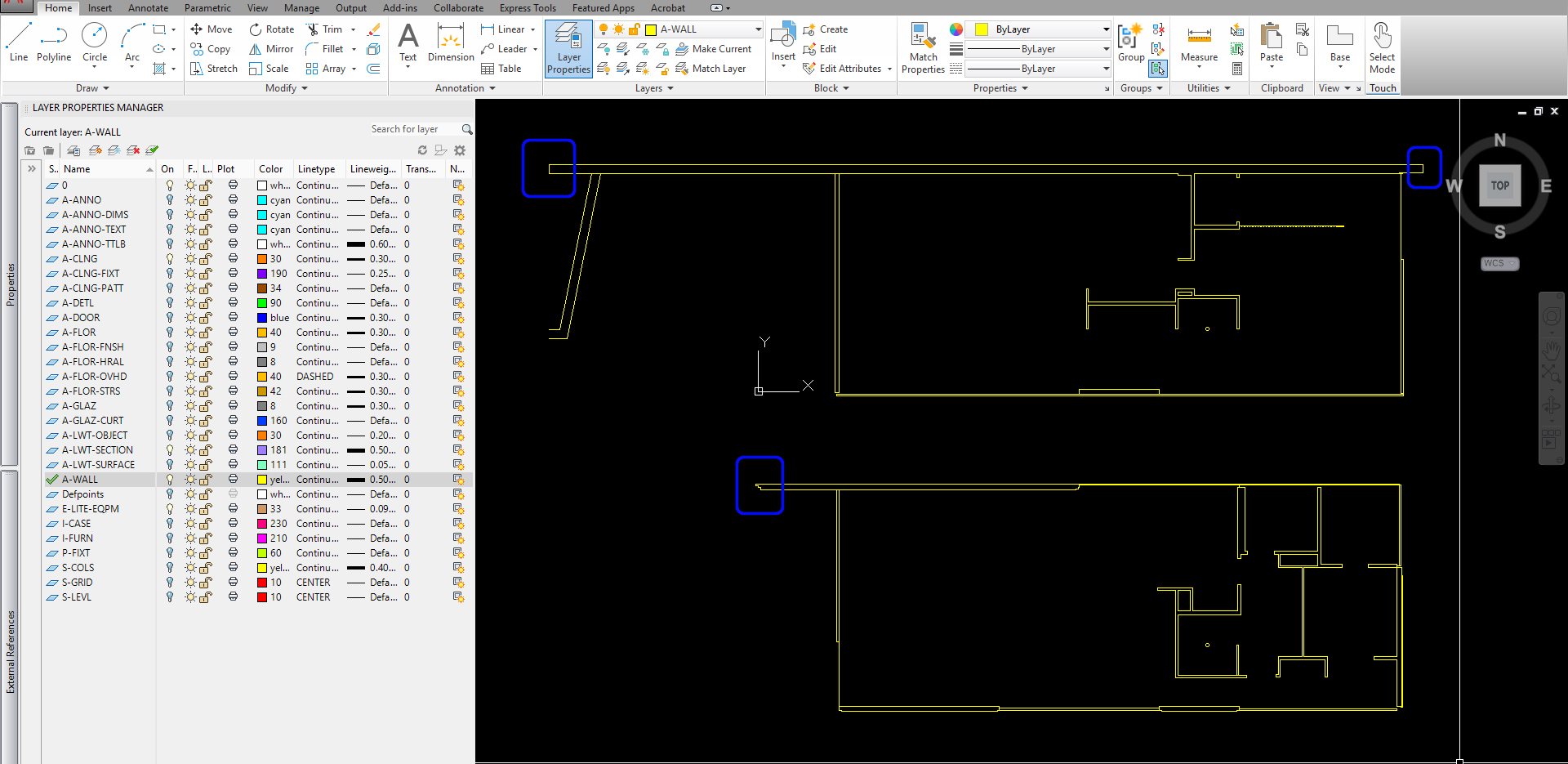
- Hatch simply recognizes a closed object. Thus you must make a closed pline or lines that are completely closed. If you are unsure the object is closed or non, yous accept to try the Hatch command outset. If the hatch control doesn't work, yous have to redraw using [PLINE] or apply [PEDIT] to convert from lines to [pline].
- [STEP 3] Add hatch for the wall
- Ostend the current layer is [A-WALL]
- Click the Hatch icon from the [Dwelling] tab, on the Describe panel
or, blazon [H] and press [ENTER] - Select Solid from the [HATCH EDITOR] tab, on the [Blueprint] panel
- Select color nine from the [HATCH EDITOR] tab, on the [Properties] console
- Every bit you movement your mouse cursor over a closed object, the hatch design fills the area. If you don't get the preview, that ways you don't accept a closed object.
- You can select multiple files for i hatch control
- Press [ENTER] to stop the hatch command
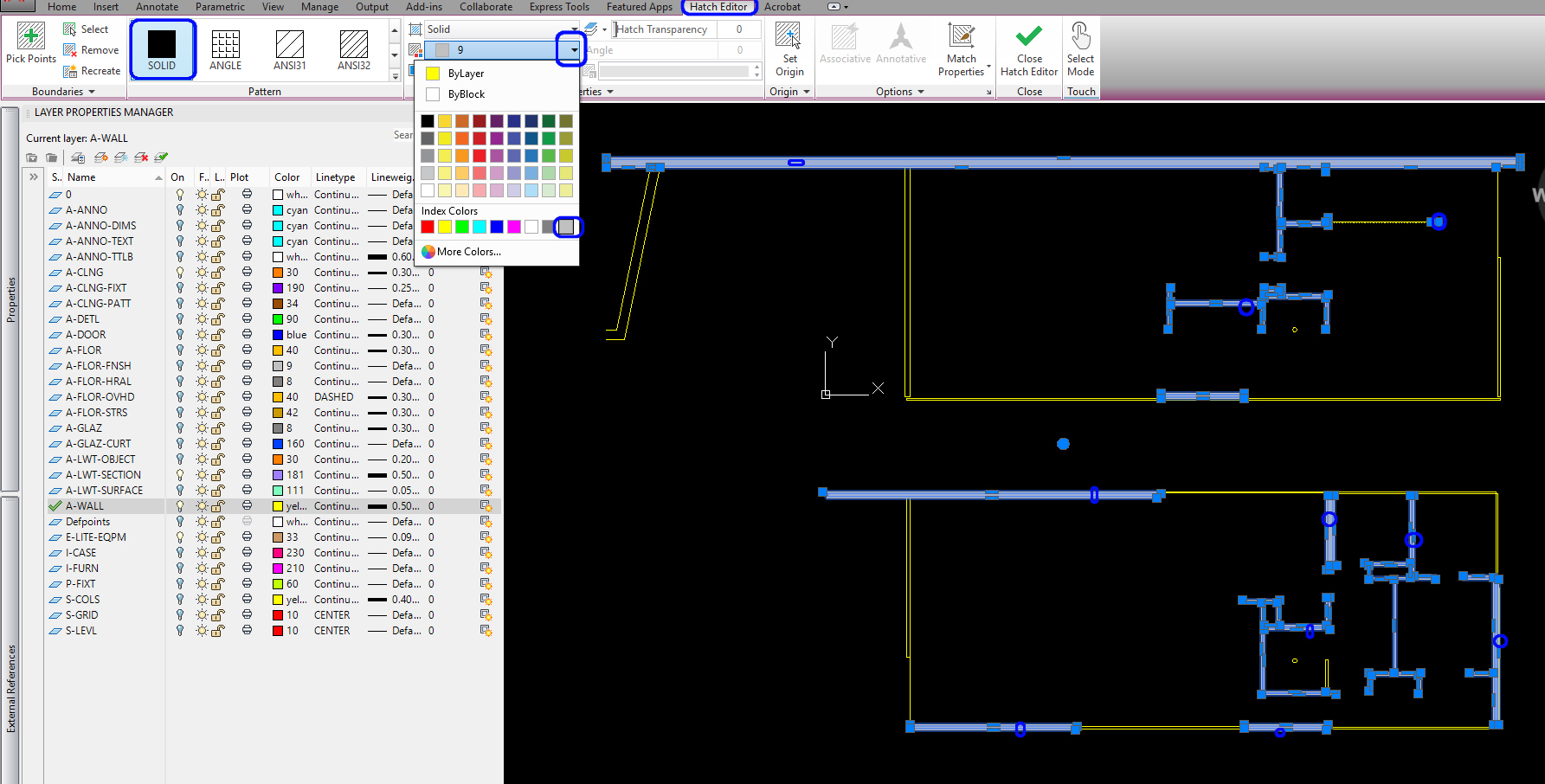
- [STEP 4] Re-create wall fills to RCPs
- Select the wall fills yous just made. if necessary, you lot also can make a block for the wall fills past typing [B] and press [ENTER]
- Change drawing order to [SEND TO Back] by clicking mouse correct-click and select [Send TO BACK]
- Copy the wall fills from the floor plans to the RCPs

- [Stride 5] Add hatch for the section view
- Select the section view
- Mouse right-click > select [EDIT BLOCK IN-Place] > Click [OK]
- Draw lines or polylines to make a closed object. Make sure y'all are in a right layer
- Select [HATCH] icon from [Habitation] tab, on [DRAW] panel
or, Type [H], and press [ENTER] central - Select a closed wall, floor, ceiling area. Yous tin can select multiple areas for 1 hatch—Press the [ENTER] key to stop the comment.
- Update the hatch make full layer to [A-LWT-SECTION]
- Once you terminate hatching, click [SAVE CHANGES] to save the block > Click [OK]

- [Pace 6] Plow on all layers
The Hatch command is to fill up an enclosed area or a selected-closed object with hatch patterns or fill.
Hatch is often used to add a fill to the wall, floor, and ceiling thickness for better readability.
Moreover, the hatch is likewise used to add patterns on a surface to limited the finishes.
In this tutorial, y'all volition practice adding solid fills on the wall of the floor plans and RCPs. This is commonly referred to as poche. Additionally, add a hatch pattern on the wall, flooring, and ceiling of the department view.
(CO iii) Create a legend for the RCPs
In your RCPs, a legend is necessary to inform what items are included, such as lighting fixtures, finishes, equipment, HVAC, and more that are used in your RCPs.
In this tutorial, you lot will make a lighting legend that y'all used in your RCPs
- [STEP i] Find/organize the lighting fixtures that yous used
- Copy the lighting block from the RCP to an empty drawing area
- Explode the lighting cake past typing [10] and press the [ENTER] key
- Remove all dimensions from the exploded lighting block. You tin can lock the [A-CLNG-FIXT] > select the dimensions > delete the selected dimensions by press the [DELETE] cardinal, or type [ERASE] and press the [ENTER] fundamental
- Delete duplicated lighting fixtures. You only demand 1 lighting fixture block of each lighting fixture blazon.
- Organize the lighting fixtures vertically. Y'all can draw a line for a reference.

- [STEP 2] Create a table with lines
- AutoCAD offers a Table tool to create a table. You lot can find the tool from the [Comment] tab under the [TABLES] panel. However, this table tool is used for very complicated documents. As an interior designer with more than 10 years' experience in the industry, I even so use lines to create a table. Please try the table tool if you desire.
- Re-create the reference line for the cavalcade lines for the table. You tin can employ the [OFFSET] command, too.

-
- Draw rows with lines
- To clean upward lines, use [TRIM] commands
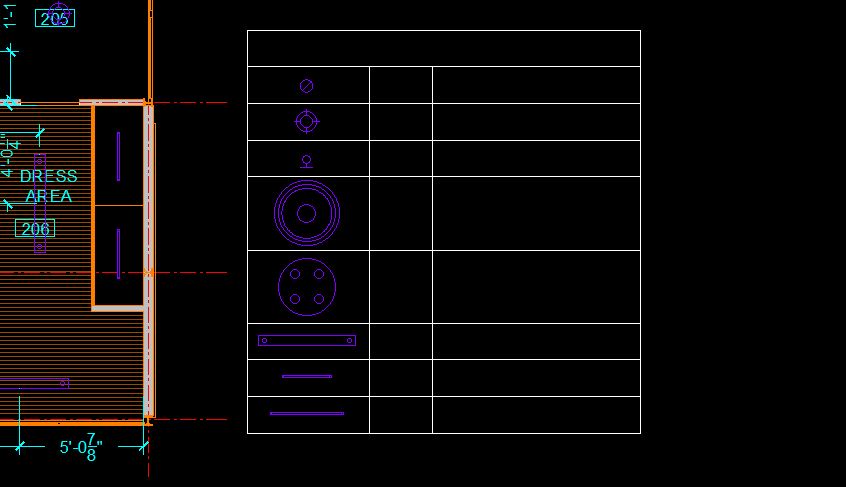
SAVE the file before closing the awarding.
Save in a different location for the fill-in (e.chiliad., a deject folder)
jonesmarobluns1980.blogspot.com
Source: https://iastate.pressbooks.pub/visualgraphiccomm/chapter/chapter-5-draw-ceiling-plans/
0 Response to "How to Draw False Ceiling Plan in Autocad"
Post a Comment